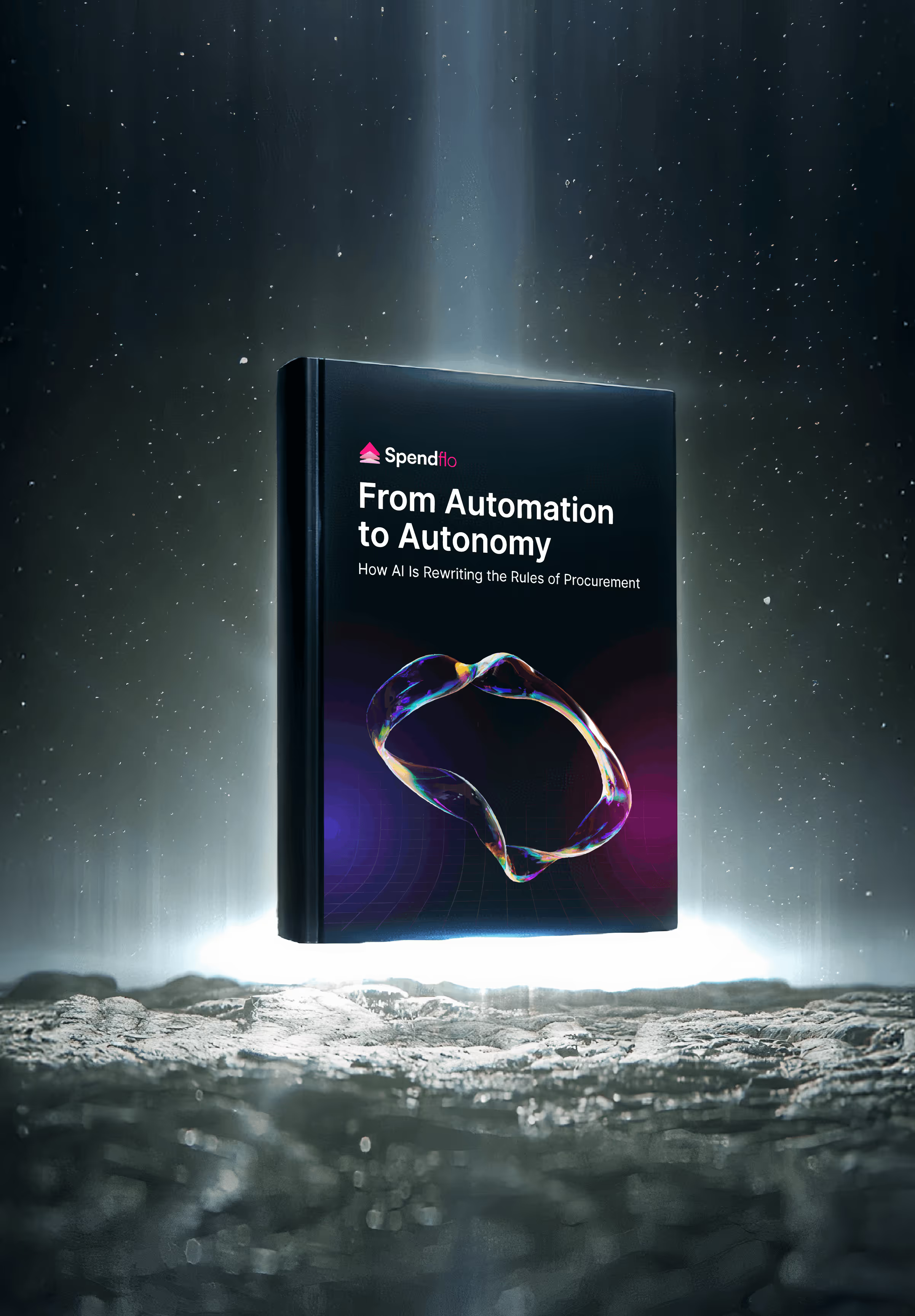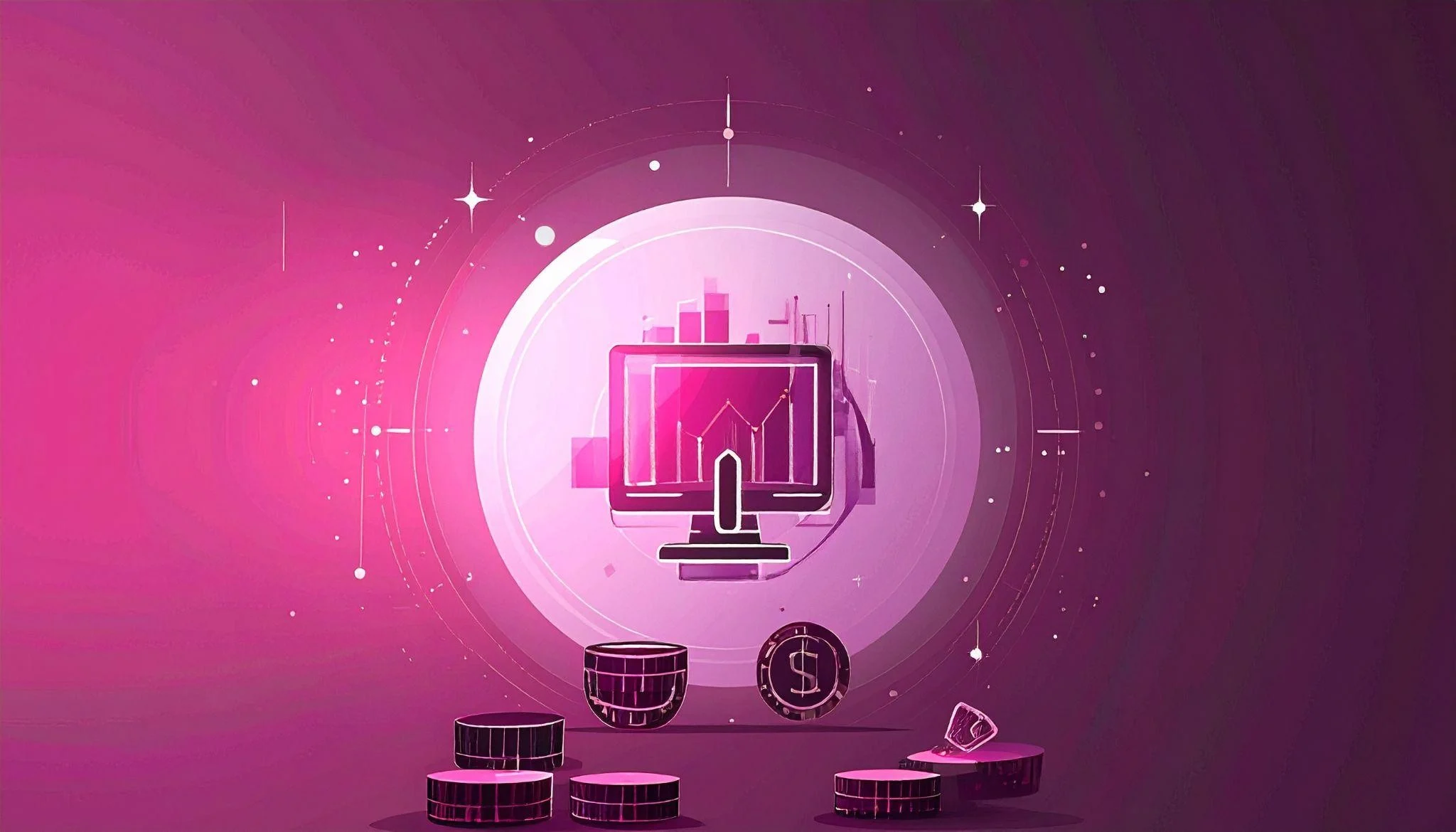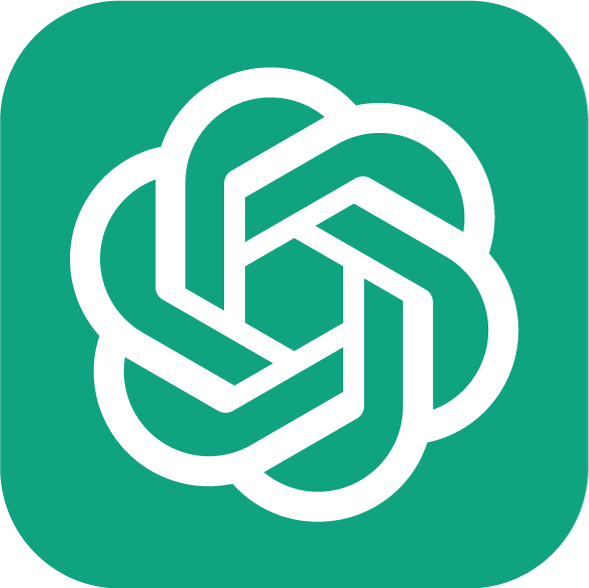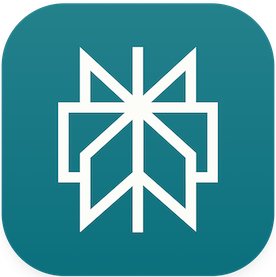

What Is Expense Reporting and Why Is It Important? A Beginner's Guide

What Is Expense Reporting and Why Is It Important? A Beginner's Guide
Learn how to make expense reporting easier, understand your finances better, and make smart decisions.


“Finance teams spend up to 20% of their time chasing receipts and reconciling expenses,” reports Deloitte. That’s time that could be better spent on strategic work. As businesses grow, managing software-related expenses becomes even more complex, often leading to overspending and missed savings opportunities.
It’s clear why expense reporting deserves more attention done right, it can bring structure, control, and clarity to company spending.
What is an Expense Report?
An expense report is a document used to record employee spending on business costs such as travel, meals, and software. It helps ensure accurate reimbursements, manage budgets effectively, and maintain clear financial records for better expense tracking.
Why Expense Reports are Useful for Financial Management?
Expense reports assist in several ways, including:
1. Visibility into spending
An expense report gives you an easy-to-read snapshot of employee spending, including software expenses.
Instead of reviewing receipts and expense claims one by one, you can simply review the report to see the total amount spent across various categories, including software.
By showing you the itemized expenses along with the total, the report makes it easy to track and analyze spending, ensuring that software costs are not creeping up unexpectedly.
2. Budget management
An essential aspect of effective financial management is ensuring that actual spending, including software expenses, aligns with budgeted amounts.
Without insights into employee expenses and software costs, it's common for spending to exceed budgets, leading to cash flow issues.
When reviewed regularly, expense reports help you proactively identify software spending that is trending over budget so you can make adjustments as needed. This visibility is key to keeping budgets on track.
3. Proper employee reimbursement
As you review itemized expenses in the reports, you can easily identify legitimate software purchases that need to be reimbursed to employees.
This ensures employees are paid back in a timely manner for software they needed to purchase to do their jobs effectively. Prompt, accurate reimbursement is important for employee satisfaction and morale.
Types of Expense Reports and When to Use Them
Different types of expense reports serve different business purposes. Knowing which one to use helps finance teams maintain accurate records, avoid duplicate claims, and gain better visibility into company spending.
1. One-time (ad-hoc) expense report
A one-time or ad-hoc expense report is used for occasional costs that don’t repeat regularly. Examples include client lunches, event tickets, or conference fees. Employees usually submit these as soon as the expense occurs to speed up reimbursement and keep documentation fresh.
2. Recurring (monthly) expense report
A recurring expense report is ideal for ongoing costs that occur every month. Think of recurring software subscriptions, utility bills, or mobile reimbursements. Submitting these reports monthly helps finance teams monitor spending patterns and spot budget irregularities early.
3. Long-term (quarterly or annual) expense report
A long-term expense report tracks costs over a longer period quarterly or yearly. These reports are often used during financial audits, budgeting sessions, or forecasting exercises. They help leaders see spending trends across departments and make more informed financial decisions.
4. Project-based expense report
A project-based expense report ties costs directly to a specific project or client engagement. Teams record expenses for materials, software tools, or travel related to that project. Submitting one after each project milestone supports transparent client billing and ensures accurate cost allocation.
5. Travel expense report
A travel expense report documents all costs related to business trips, such as airfare, hotels, meals, and ground transportation. Employees typically submit these reports after returning from travel. Keeping this process consistent helps finance teams reimburse employees faster and control travel budgets more effectively.
6. Mileage-only expense report
A mileage-only expense report is used to log vehicle-related costs when employees drive for business purposes. These reports include odometer readings, fuel receipts, and travel logs. Submitting them monthly helps companies fairly compensate employees while keeping mileage data accurate for compliance purposes.
Standard Expense Reporting Categories for Tax and Accounting
Every business needs a clear system for tracking expenses not just for internal budgeting, but also for compliance and tax preparation. Organizing costs under standard expense categories helps finance teams stay aligned with IRS expense categories and simplify year-end reporting.
Here are the most common business expense types and how they’re used in accounting:
1. Travel Expenses
Include airfare, hotels, meals, and ground transportation costs incurred during business trips. These tax-deductible expenses should be supported by receipts and trip details for accurate reimbursement and compliance.
2. Office Supplies and Equipment
Covers everyday essentials like stationery, laptops, monitors, and furniture. Tracking these under the right expense categories for accounting helps ensure accurate asset reporting and depreciation tracking.
3. Software and Subscriptions
Includes SaaS tools, productivity platforms, and other recurring technology costs. As companies rely more on digital tools, this category often represents a significant share of operational spend.
4. Client Entertainment and Meals
Used for hosting clients or business partners during meetings, events, or meals. These IRS expense categories often have strict limits, so maintaining itemized receipts is key for compliance.
5. Professional Development and Training
Covers workshops, certifications, and learning programs that help employees upskill. These tax-deductible expenses support workforce growth while contributing to long-term business efficiency.
6. Marketing and Advertising
Includes campaigns, sponsorships, digital ads, and promotional materials. Properly categorizing marketing spend helps companies measure ROI and justify future budgets.
7. Utilities and Rent
Applies to office rent, electricity, water, and internet costs. These are core expense categories for accounting and are essential for understanding the company’s fixed operating costs.
8. Insurance and Legal Fees
Captures business insurance premiums, consulting fees, and legal retainers. These expenses ensure the business remains protected and compliant with regulatory standards.
9. Mileage and Transportation
Used for car-related travel, including fuel, tolls, and mileage reimbursements. Employees should record odometer readings and trip details to maintain transparency and meet IRS expense category guidelines.
10. Miscellaneous Business Expenses
Includes smaller, irregular costs that don’t fit neatly into other categories such as bank fees or delivery charges. While they may seem minor, these expenses can add up and affect overall budget accuracy.
Key Elements of an Employee Expense Report
A well-structured expense report helps companies maintain transparency, accuracy, and compliance. Whether you’re submitting travel costs or software purchases, these are the key elements of an expense report every business should include.
1. Employee Information
Each report should clearly identify the employee, their department, and their manager. This ensures proper accountability and helps with expense report compliance during audits.
2. Date of Expense
Record the exact date each purchase was made. This supports accurate tracking and aligns with IRS expense report requirements for documentation and reimbursement timelines.
3. Vendor Name
Include the name of the merchant or service provider. It helps finance teams validate transactions and categorize spending by vendor.
4. Expense Category
Classify every cost under the correct expense category such as travel, software, meals, or office supplies. This is one of the most mandatory expense report fields for proper accounting and tax preparation.
5. Description of Business Purpose
Briefly explain how the expense supports business operations. Clear explanations help reviewers confirm that each cost meets company and IRS expense report requirements.
6. Purchase Cost (with Tax and Tip)
Record the total amount paid, including taxes, service charges, and tips if applicable. Accurate reporting prevents reimbursement delays and helps maintain budget precision.
7. Supporting Documentation (Receipts)
Attach scanned or digital copies of receipts to verify each transaction. This is a fundamental expense report requirement for audits and financial reviews.
8. Subtotals by Category
Group related costs under each category to make it easier for finance teams to review and reconcile expenses efficiently.
9. Grand Total
Sum up all the reported expenses to provide a clear overview of total spending. This supports faster approval and ensures the company stays within budget.
10. Approval Signature
A final signature from the employee’s manager or the finance department confirms the report’s accuracy and compliance. Approval workflows are essential to meet expense report compliance standards.
Challenges in Creating Effective Expense Reports
Even with the best intentions, creating accurate and compliant expense reports isn’t always easy. Here are some common challenges companies face and practical solutions to address them.
1. Missing Receipts
Challenge: Employees often lose or forget to attach receipts, especially for smaller expenses or software purchases. Missing proof of payment can lead to incomplete records and reimbursement delays.
Solution: Use expense management software that allows employees to upload digital receipts instantly. This ensures every transaction from travel bookings to software renewals is properly documented and easy to verify.
2. Unclear Software Expense Policies
Challenge: Without clear rules, employees may not know which software expenses are allowed or how to categorize them correctly. This can cause confusion during report submission and approval.
Solution: Develop a clear, written expense policy that outlines what qualifies as reimbursable software spend. Include real examples, category lists, and approval limits so employees can follow the process with confidence.
3. Manual Data Entry
Challenge: Entering every line item manually takes time and increases the risk of typos or missing information. For finance teams handling dozens of reports each month, this can slow down the entire reimbursement cycle.
Solution: Automated expense reporting tools eliminate repetitive data entry. By integrating with corporate cards, these systems pull transaction details automatically, saving time and reducing errors.
4. Enforcing Expense Policies
Challenge: It’s not easy to ensure every report complies with company rules especially when spending policies vary across departments. Inconsistent enforcement can lead to budget leaks or policy breaches.
Solution: Set up clear communication around policies and use automated approval workflows to flag out-of-policy submissions. Regular audits also help maintain accuracy and ensure every expense meets company and compliance standards.
3 Common Expense Report Mistakes to Avoid
Even well-meaning employees can make reporting errors that affect compliance and accuracy. Understanding these expense report mistakes helps teams maintain financial integrity and avoid expense report rejection or costly audits.
1. Not Having a Clear Expense Policy
When there’s no well-defined policy, employees are left guessing what’s acceptable. This often leads to expense policy violations, such as submitting personal expenses or misclassifying purchases.
A clear, written expense policy should outline approved categories, spending limits, documentation rules, and approval steps. Clarity ensures consistency and prevents confusion across teams.
2. Accepting Reports Without Receipts
Missing receipts may seem minor, but they can cause serious problems during audits. Submitting reports without receipts increases the risk of IRS audit mistakes and potential penalties.
To stay compliant, companies should require receipts for every expense, even digital ones. Modern expense management tools can automate receipt uploads, helping teams maintain complete, audit-ready records.
3. Miscategorizing Expenses
When employees enter the wrong expense categories such as labeling a marketing cost as travel it skews financial data and can distort tax deductions. These common expense errors make it harder for finance teams to track budgets accurately.
Proper training, clear examples in the expense policy, and automated categorization tools can reduce these errors and improve reporting accuracy.
How to Fill Out an Expense Report
Filling out an expense report might seem simple, but accuracy and consistency are key. This expense report step-by-step guide walks you through the process to ensure your submissions are complete, compliant, and audit-ready.
Step 1: Check the Policy and Choose the Right Report
Before starting, review your company’s expense policy. This helps you understand spending limits, required documentation, and eligible expenses. Then, choose the right type of report such as ad-hoc, recurring, or travel based on your purchase. Following this step helps avoid expense report rejection and policy violations later.
Step 2: Gather and Organize Receipts
Collect all receipts related to your business expenses, including meals, travel, office supplies, and software subscriptions. Keep them in chronological order or by category to simplify data entry.
If your company uses expense software, upload receipt images right away to stay organized and compliant.
Step 3: Complete the Report Header
Fill out the top section of your report with essential details: your name, department, manager, and reporting period. Include the date of each expense and vendor name. These mandatory expense report fields ensure your report meets company and IRS expense report requirements.
Step 4: Itemize Each Expense Line
Enter each transaction separately, listing the date, vendor, and total amount. Be sure to itemize expenses if multiple charges appear on one receipt for instance, separating airfare, lodging, and meals from a single trip.
Itemizing improves accuracy and helps finance teams track spending by category.
Step 5: Add Business Purpose and Attendees
For every expense, include a short description of the business purpose. For meals or client entertainment, list attendee names and meeting context (e.g., “Lunch with ABC Corp to review Q4 strategy”). This level of detail supports transparency and policy compliance.
Step 6: Categorize and Allocate Expenses
Assign each item to the correct category such as travel, software, marketing, or office supplies. Proper categorization aligns with accounting standards and helps finance teams allocate costs correctly.
Consistent classification also ensures smooth reporting during audits and tax season.
Step 7: Attach and Verify Receipts
Attach digital or scanned receipts to each expense entry. Always double-check that receipts are legible and match the listed amount. Missing documentation can delay approval or raise expense report compliance issues.
Step 8: Reconcile Totals and Currency
Verify that subtotals and the grand total add up correctly. If expenses involve different currencies, convert them using your company’s approved rate. Reconciling early prevents calculation errors and reimbursement delays.
Step 9: Self-Audit for Policy Issues
Before you submit your expense report, review it for accuracy and compliance. Check that all expenses fall within company guidelines and include receipts. Flag potential policy exceptions and provide explanations when necessary.
Step 10: Submit, Track, and Archive
Once verified, submit your report through the designated system or platform. Track its approval status and ensure timely reimbursement. Keep a copy digital or printed for your records. Most expense tools store reports automatically, making audits smoother and faster.
Complete Expense Reporting Process
A well-defined expense reporting process ensures every business cost is tracked, verified, and reimbursed accurately. Here’s a simple breakdown of how expenses move from payment to reimbursement.
1. Incur an Expense (With Receipt)
The process starts when an employee makes a business-related purchase such as travel, meals, or software and collects a receipt. Keeping detailed proof of each transaction is essential for compliance and accurate reimbursement.
2. Prepare the Report (Itemize, Categorize, Attach Receipts)
Next, the employee prepares the expense report by listing each transaction, itemizing expenses, selecting the correct category, and attaching receipts.
Expense management software makes this step easier by automatically pulling transactions from linked cards and organizing them by type.
3. Submit for Approval (Via Software or Email)
Once complete, employees submit for reimbursement through an internal system, mobile app, or email. Submissions should include all necessary details and documentation to avoid delays.
This step triggers the expense approval workflow moving the report to the next stage for managerial review.
4. Manager Review (Check Policy, Accuracy, Business Purpose)
During manager review expense checks, supervisors verify that all costs align with company policies and have valid business purposes. They also confirm that receipts are attached and totals are correct before forwarding the report to finance.
5. Finance Approval (Verify, Post to GL)
In the finance approval process, the accounting team reviews the approved report for accuracy and compliance with internal controls and IRS rules. Once verified, expenses are posted to the general ledger (GL) for accurate financial reporting.
6. Reimbursement (Via ACH, Check, or Payroll)
Finally, employees are reimbursed through ACH transfer, check, or payroll credit. Timely reimbursement not only builds trust but also encourages employees to follow the process accurately in the future.
Expense Report Policy Best Practices for 2025
A clear expense policy keeps company spending fair, consistent, and compliant. As businesses grow and new tools emerge, updating these guidelines ensures smoother operations and fewer reimbursement disputes. Below are the top expense policy best practices to follow in 2025.
1. Define Reimbursable Expenses and Spending Limits
Every company should have a written reimbursable expenses policy that outlines what employees can and cannot claim. Define categories such as travel, software, meals, and client entertainment.
Include a spending limits policy for each type of expense for example, a $75 meal cap or pre-approval for software purchases above a set amount. Clear limits help prevent confusion and out-of-policy claims.
2. Require Receipts for All Expenses Over $25
One of the most effective receipt requirements is to mandate receipts for any expense over $25. This keeps records audit-ready and prevents disputes later.
For digital receipts, encourage employees to upload them immediately using your company’s expense software. Storing receipts centrally helps finance teams verify claims quickly.
3. Set Submission Deadlines
Establish clear deadlines for submitting reports typically within 30 days of incurring the expense. Timely submission ensures accurate bookkeeping and faster reimbursement.
Automated reminders from expense tools can help employees stay on schedule and maintain compliance.
4. Use Automated Software to Enforce Policies
Modern expense tools can automatically enforce your spending limits policy, flag duplicate entries, and alert managers to missing receipts. Automation ensures consistency across departments and reduces manual errors.
It also gives finance teams better visibility into spending trends, helping them make data-driven budget decisions.
5. Train Employees on Policy Updates Quarterly
Policies are only effective if employees understand them. Regular expense policy training ideally once per quarter keeps everyone aligned with updated rules, reimbursement limits, and compliance standards.
Interactive training sessions or quick digital refreshers ensure employees know how to apply policies in real-world scenarios.
How Automated Expense Reporting Works in 2025
Modern finance teams are replacing manual data entry and paper receipts with automated expense reporting tools that make tracking, reviewing, and approving expenses faster and more accurate. Here’s how today’s automation technology transforms the process.
1. Real-Time Expense Submission via Mobile App
Employees can now submit expenses instantly through a mobile app. With real-time expense submission, receipts can be uploaded on the spot no waiting until the end of the month. This improves accuracy, reduces lost receipts, and keeps expense data current.
2. OCR Receipt Scanning in Multiple Languages and Currencies
Optical Character Recognition (OCR) technology reads printed or digital receipts automatically. Advanced OCR receipt scanning tools now support multiple languages and currencies, making it easy for global teams to capture expenses wherever they are.
This feature minimizes manual input and ensures consistent data formatting across international offices.
3. AI-Powered Categorization That Learns From Past Entries
Today’s tools use AI expense categorization to identify spending patterns and automatically assign each expense to the correct category like travel, software, or meals. The system learns from previous entries, improving accuracy over time and reducing the need for manual corrections.
4. Automated Policy Enforcement With Instant Alerts
Built-in policy checks automatically detect and flag out-of-policy expenses. With automated expense reporting, finance teams get instant alerts when spending exceeds limits or when required receipts are missing.
This keeps approvals consistent and ensures full compliance without slowing down employees.
5. Seamless Integration With Accounting Software
The best platforms offer expense software integration with tools like QuickBooks, NetSuite, and Xero. This enables automatic syncing of approved expenses into the general ledger, cutting down on reconciliation time and reducing errors during month-end close.
How Spendflo Helps You Cut Down Excess Spending on SaaS With Detailed Expense and Usage Reports
Most growing companies lose track of their SaaS spend as teams purchase tools independently. Without visibility, costs rise quietly often 25% higher than budgeted and duplicate subscriptions go unnoticed until renewals hit.
That’s where Spendflo comes in!
One of our customers, a mid-sized SaaS startup, discovered through Spendflo’s reports that nearly 40% of their licenses were unused or duplicated across departments. Within three months, they consolidated vendors and reduced total SaaS expenses by 28%.
Unmonitored renewals and underused tools are common pain points for finance teams. They drain budgets, reduce ROI, and make financial forecasting harder than it should be.
Spendflo solves this with:
- Comprehensive SaaS discovery that automatically identifies all active subscriptions.
- Detailed expense reports breaking down spend by vendor, department, and employee.
- Usage analytics that show which tools are actually used and which aren’t.
With these insights, you gain complete visibility and control over SaaS spending eliminating waste and ensuring every dollar drives value.
Ready to see what Spendflo can uncover for you? Book a demo today and start saving on SaaS with smarter expense and usage reporting.
Frequently Asked Questions
Why are expense reports important for businesses?
Expense reports help companies maintain financial accuracy, ensure policy compliance, and manage budgets effectively. They provide a detailed record of employee spending covering travel, software, and client expenses allowing finance teams to monitor cash flow, identify cost-saving opportunities, and stay audit-ready.
What should be included in an expense report?
A complete expense report should include the employee’s name, department, date of expense, vendor details, category, and total cost including tax or tip. Each entry must have a receipt and a short business purpose. Subtotals, grand totals, and an approval signature are also essential for proper documentation and reimbursement.
How do I fill out an expense report correctly?
To fill out an expense report correctly, first review your company’s policy to confirm spending limits and eligible categories. Gather all receipts, itemize each transaction, and categorize expenses accurately. Attach documentation, verify totals, and double-check compliance before submitting it for approval through your company’s expense system.
How can companies prevent expense report fraud?
Companies can prevent expense report fraud by implementing automated approval workflows, requiring digital receipts, and enforcing spending limits. Regular audits, AI-powered expense tracking, and real-time alerts for duplicate or out-of-policy claims help finance teams detect irregularities early and maintain full transparency.










.png)





.png)




.png)





.avif)





